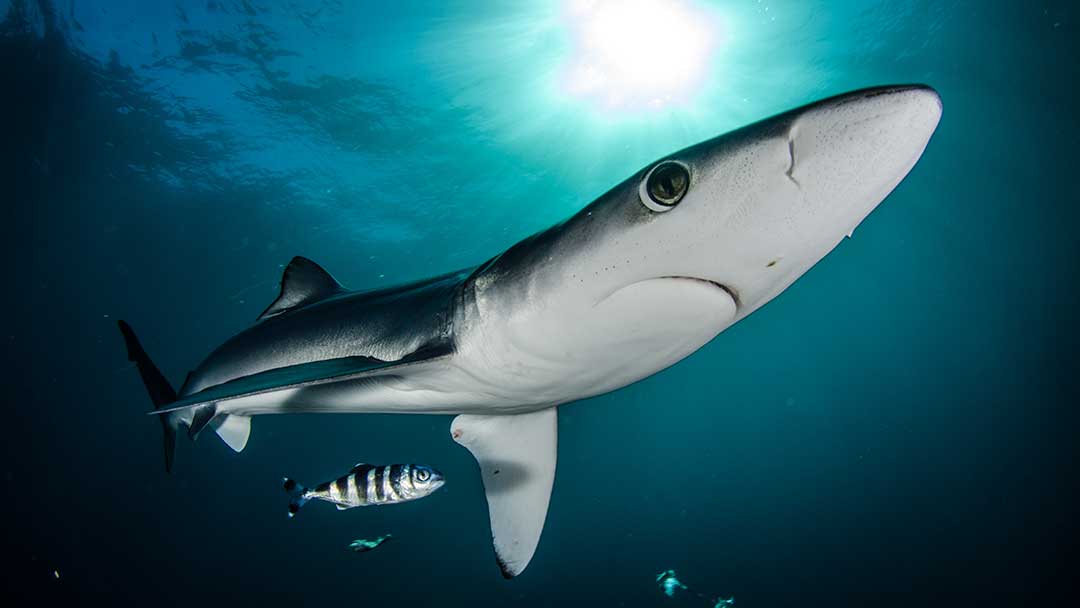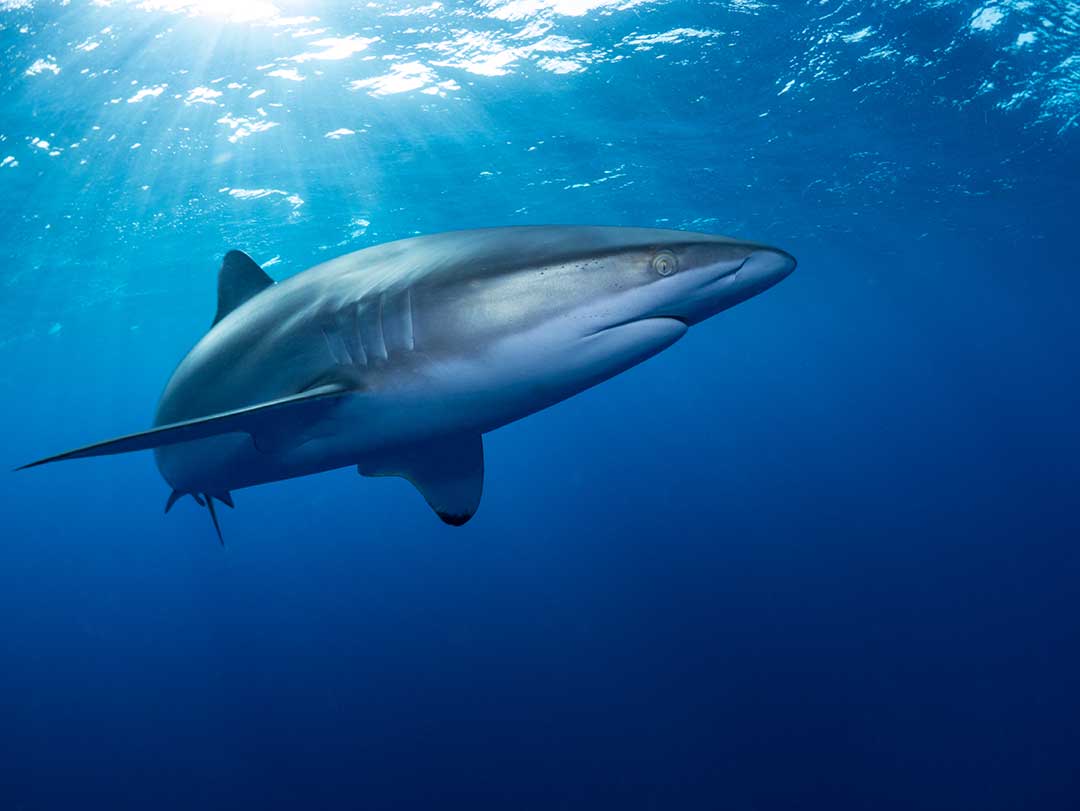Going, going, going… oceanic shark species on the decline
We are losing nature at an unprecedented rate. On land, it’s relatively easy to observe these changes – we see forests shrinking, notice the absence of familiar species. But it’s much harder to know what’s going on in the oceans. Beneath the waves, life – and loss – is hidden from us.
Sharks and rays (also known as elasmobranchs) play a vital role in marine ecosystems, and can therefore offer a window into the state of our oceans. We already know that these animals are vulnerable; many species are long-lived and slow to reproduce, and so are slow to recover from exploitation. Across the globe, sharks and rays are taken for their meat, fins, gill plates and liver oil, as well as being caught indirectly as bycatch. Severe declines in many populations from various regions have been documented, as has the rise in the trade of shark products. But now, for the first time, an international cohort of scientists has put together a global picture of how bad the situation really is.
The study, published in the journal Nature, shows an unprecedented global decline: since 1970, numbers of oceanic sharks and rays have fallen by 71.1%. In conjunction, extinction risk for these species has dramatically increased. The authors estimate that just three decades ago, nine species were thought to be at risk of extinction – now, three quarters are threatened. Of the 31 species assessed, half are currently classified as either Critically Endangered or Endangered on the IUCN Red List of Threatened Species, the two highest categories. This includes the oceanic whitetip, considered one of the most widely ranging sharks.

Oceanic whitetip sharks have seen some of the most drastic declines in population. Photo by © Chris Vaughan Jones
How did the researchers carry out this study?
So, if biodiversity loss in the oceans is so hard to monitor, how did the team manage to gather such crucial information? They used a combination of two biodiversity ‘indicators’, which measure changes in wildlife populations over time. The first is the Living Planet Index (LPI), which looks at abundance – that’s how many animals are in a population – by combining multiple datasets from a variety of sources. For this study, the scientists collated 57 datasets detailing changes in shark and ray abundance between the period of 1970, to 2018, and then used this data to predict figures for 2019 and 2020. This information was then combined with a second indicator – the Red List Index (RLI). The RLI tracks changes in extinction risk, or in other words, how likely it is that there will be no known living individuals of that species left in the wild. Again, the scientists combined different assessments from 31 species of oceanic sharks and rays. By gathering and analysing multiple datasets, it’s possible to identify common trends across species – rather like putting all the pieces of a jigsaw together to see the whole picture.
What is causing the decline in oceanic shark and ray species?
The authors identify overfishing as the main threat and established three main reasons why. The first is that, in the same timeframe, the usage of longlines and seine nets, the fishing gears that catch the most oceanic sharks, has almost doubled. The second is that the largest species showed declines first, followed by medium and then small-sized species – which reflects the wider trend of ‘fishing down the food chain’. And the third is fisheries stock data. Assessments show that certain populations have been heavily overfished, and that overall oceanic shark catch has tripled since 1970.
How do we stop shark and ray populations from declining?
Productive wild fisheries are vital nutritional and economic resources for millions of people. Banning activities is unrealistic, and damaging, especially to developing nations. The answer lies in better fisheries management, and an increased commitment from national and international governments to meet environmental targets. Few countries currently impose catch limits on threatened shark species; fewer still demonstrate working actively towards sustainable solutions. But evidence suggests these declines can be reduced in light of science-based, precautionary management and innovative, community-based solutions. For example, the white shark and north-western populations of hammerhead sharks are making a comeback thanks to tighter regulations. Here’s hoping the same can soon be said for the rest.


